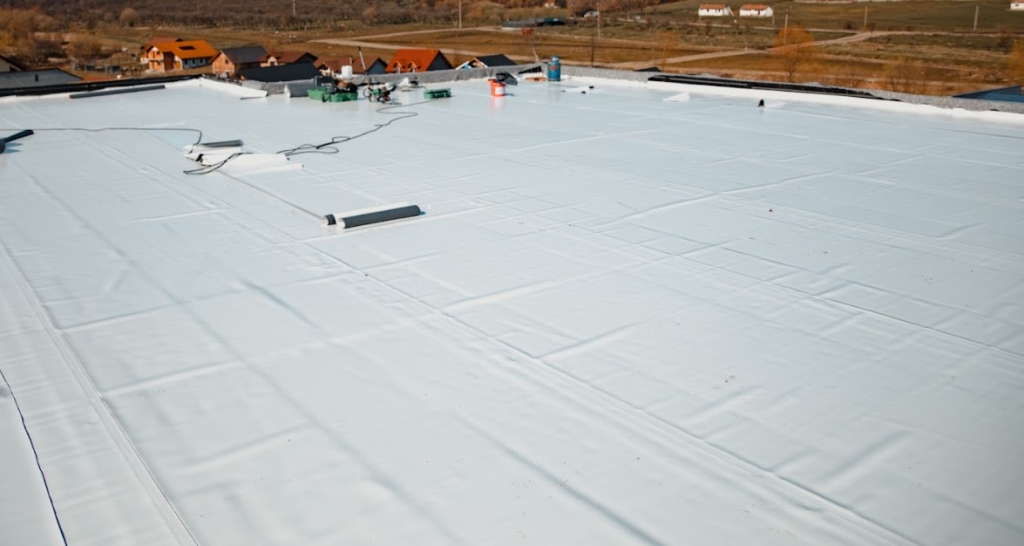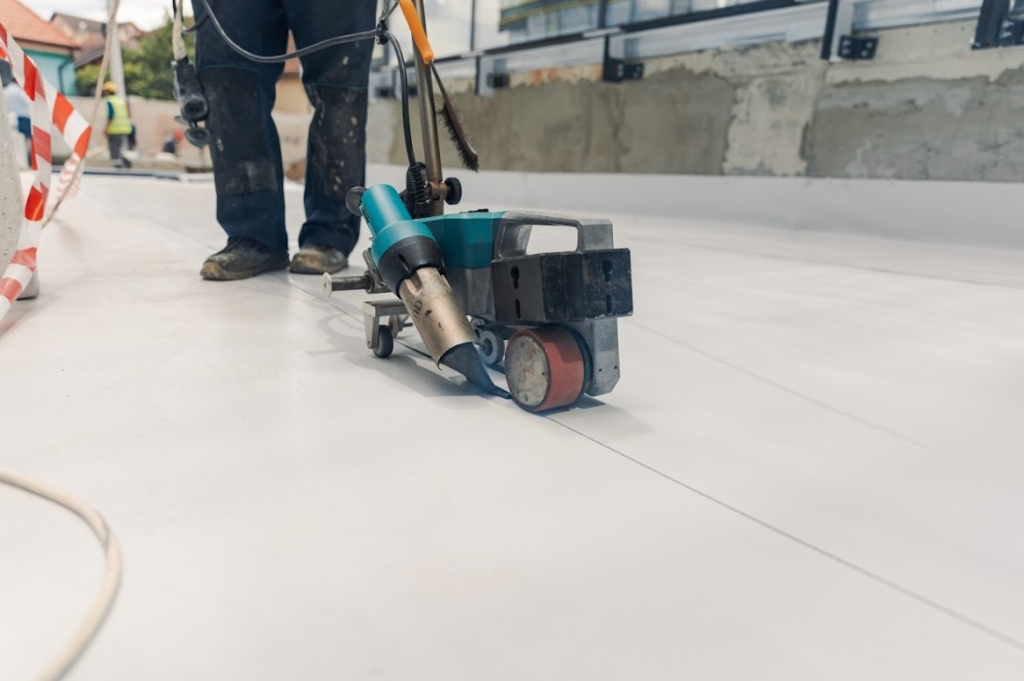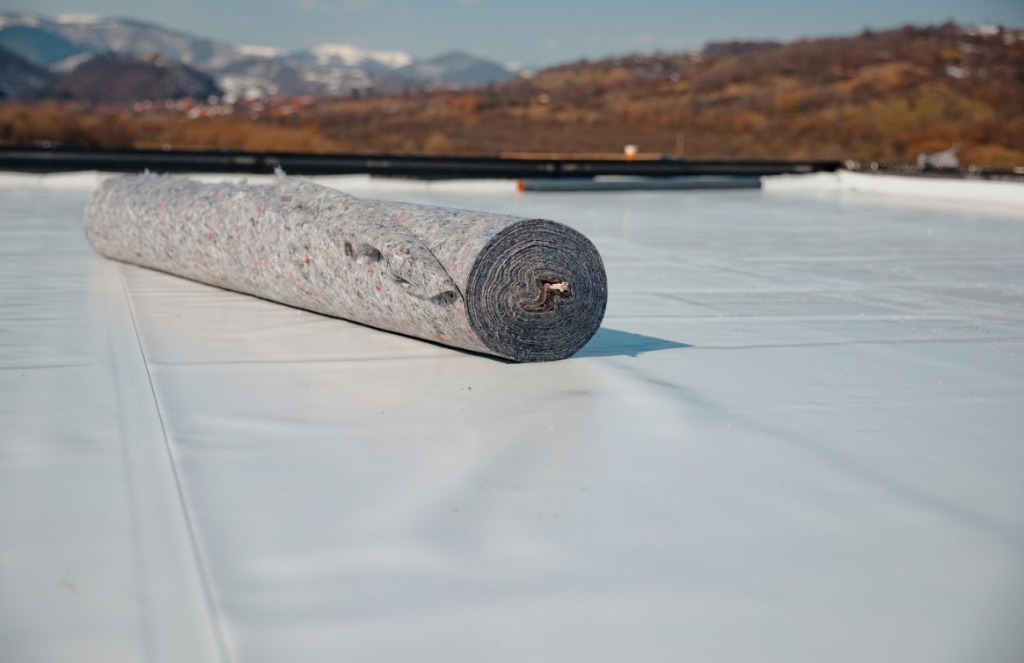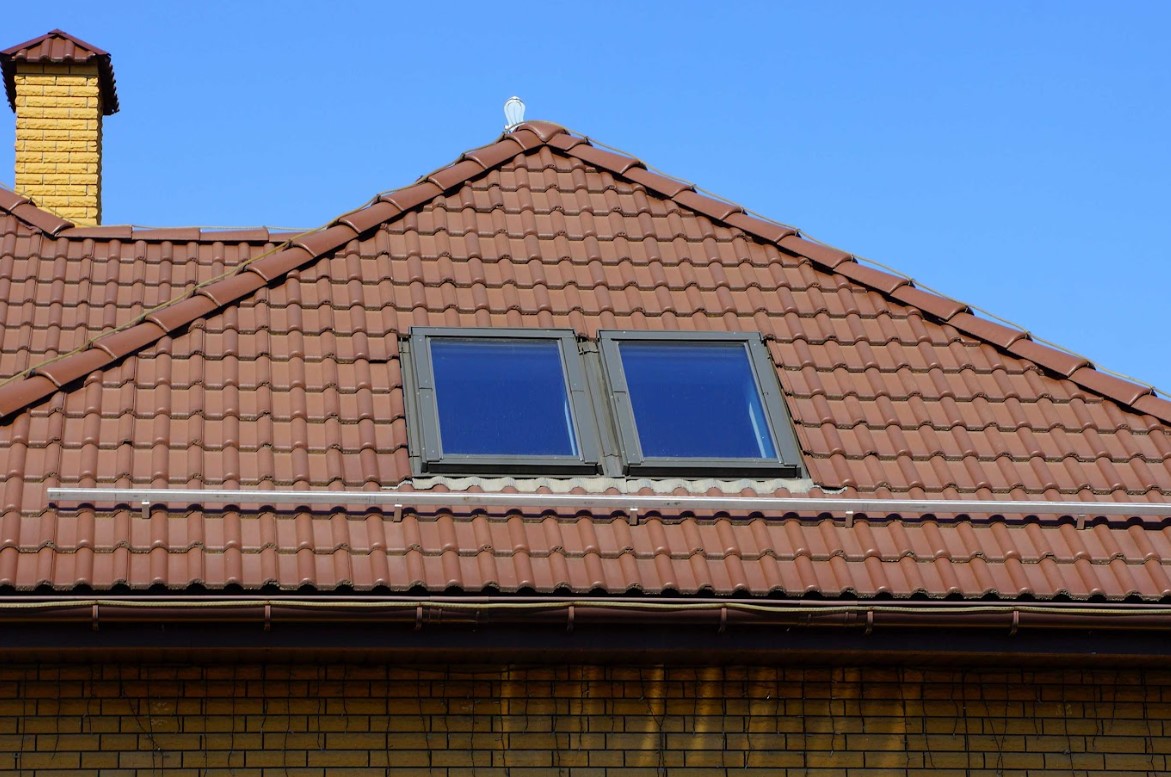
At TSM Roofing, we’ve seen our fair share of commercial roofing projects. Today, we’re going to dive into the world of low-slope commercial roofing, uncovering some essential facts that every building owner should know. Let’s investigate the ins and outs of these popular roofing systems, examining their benefits, challenges, and various options available in the market.
What Defines a Low-Slope Commercial Roof?
Low-slope roofs, often mistaken for flat roofs, actually have a slight incline. These roofs typically have a pitch of 1/4 inch to 1/2 inch per foot, allowing for proper drainage while maintaining a nearly horizontal appearance. This design is particularly popular in commercial buildings due to its practicality and cost-effectiveness.
Low-Slope Commercial Roofing Options
Building owners have several low-slope commercial roofing options. Each type comes with its own set of advantages and considerations:
- Built-Up Roofing (BUR)
- Modified Bitumen
- Single-Ply Membranes (EPDM, TPO, PVC)
- Spray Polyurethane Foam (SPF)
- Metal Roofing Systems
Advantages of Low-Slope Commercial Roofs
Due to their compelling benefits, low-slope roofs have become a go-to choice for commercial buildings. These roofing systems offer a cost-effective installation process, which can significantly reduce initial construction expenses. Building owners appreciate the ease of maintenance and inspections, as the low slope allows for safe and straightforward access. The design maximizes interior space, eliminating the need for steep pitches that can eat into usable square footage. Low-slope roofs also provide an ideal location for HVAC equipment placement, keeping these essential systems out of sight while ensuring easy serviceability. Additionally, these roofs hold great potential for energy efficiency, particularly when combined with reflective coatings or cool roofing materials, which can help cut down on cooling costs in warmer climates. These advantages come together to make low-slope roofs an attractive option for many commercial property owners and managers.

Challenges to Consider
While low-slope roofs deliver numerous benefits, they also present unique challenges that building owners should consider. Drainage issues can arise if the roof is not properly designed, leading to potential water accumulation. This ties into another common concern: the possibility of ponding water, which can put extra stress on the roof structure and potentially lead to leaks. Additionally, these roofing systems often require more frequent maintenance to ensure their longevity and performance. Regular inspections and upkeep are crucial to catch and address issues early. Lastly, low-slope roofs can be more susceptible to certain types of damage, such as punctures or tears, due to their relatively flat surface. Understanding these challenges allows building owners to make informed decisions and take proactive measures to effectively maintain their low-slope commercial roofs.
Weighing the Options: Pros and Cons of Low-Slope Commercial Roofs
Let’s examine the pros and cons of low-slope commercial roofs in more detail:
Pros:
- Versatility in material choices
- Lower initial installation costs
- Reduced lifecycle costs with proper maintenance
- Improved energy efficiency with reflective coatings
- Ample space for solar panel installation
Cons:
- There is a higher potential for leaks if not installed correctly
- More frequent maintenance and inspections required
- Shorter lifespan compared to some steep-slope options
- Limited design aesthetics
Choosing the Right Low-Slope Roofing System
Selecting the appropriate low-slope roofing system involves weighing several crucial factors. Building owners must consider the structure’s design and its ability to bear the weight of different roofing materials. They need to take into account the local climate and typical weather patterns, which can significantly impact the roof’s performance and longevity. Budget constraints often play a significant role in influencing the choice of materials and installation methods. Energy efficiency goals should also be factored in, as some roofing systems offer better insulation and reflective properties than others. Finally, the desired lifespan of the roof and available warranty options can guide the decision-making process, helping to ensure a balance between upfront costs and long-term value. By carefully evaluating these factors, building owners can choose a low-slope roofing system that best meets their specific needs and circumstances.

Maintenance: The Key to Longevity
Proper maintenance is important for the longevity of any low-slope commercial roof. Regular inspections, prompt repairs, and scheduled cleaning can significantly extend the life of your roofing system. At TSM Roofing, we recommend bi-annual professional inspections to catch and address potential issues before they become major problems.
The Future of Low-Slope Commercial Roofing
As technology pushes forward, roofing materials and techniques keep pace, bringing exciting developments to the field of low-slope commercial roofing. The industry is witnessing the emergence of advanced materials that deliver improved durability, extending the lifespan of roofs and reducing long-term costs. Smart technologies are making their way onto rooftops, allowing for real-time monitoring of roof health and early detection of potential issues. Energy efficiency remains a top priority, with enhanced coatings and insulation options that help buildings reduce energy consumption and costs. Furthermore, green roofing systems are gaining traction, offering improved sustainability and contributing to urban biodiversity. These innovations are set to transform the way we think about and utilize low-slope commercial roofs, making them not just protective structures but intelligent, efficient, and environmentally friendly assets to buildings.
Making an Informed Decision
Choosing the right low-slope commercial roofing system is a significant decision that can impact your building’s performance and bottom line. By understanding the facts about low-slope commercial roofing, you’ll be better equipped to make an informed choice that aligns with your building’s needs and long-term goals.
At TSM Roofing, we’re here to guide you through the process, offering expert advice and top-quality installation services. Contact us today to learn more about how we can help you select and install the perfect low-slope commercial roofing system for your building.



